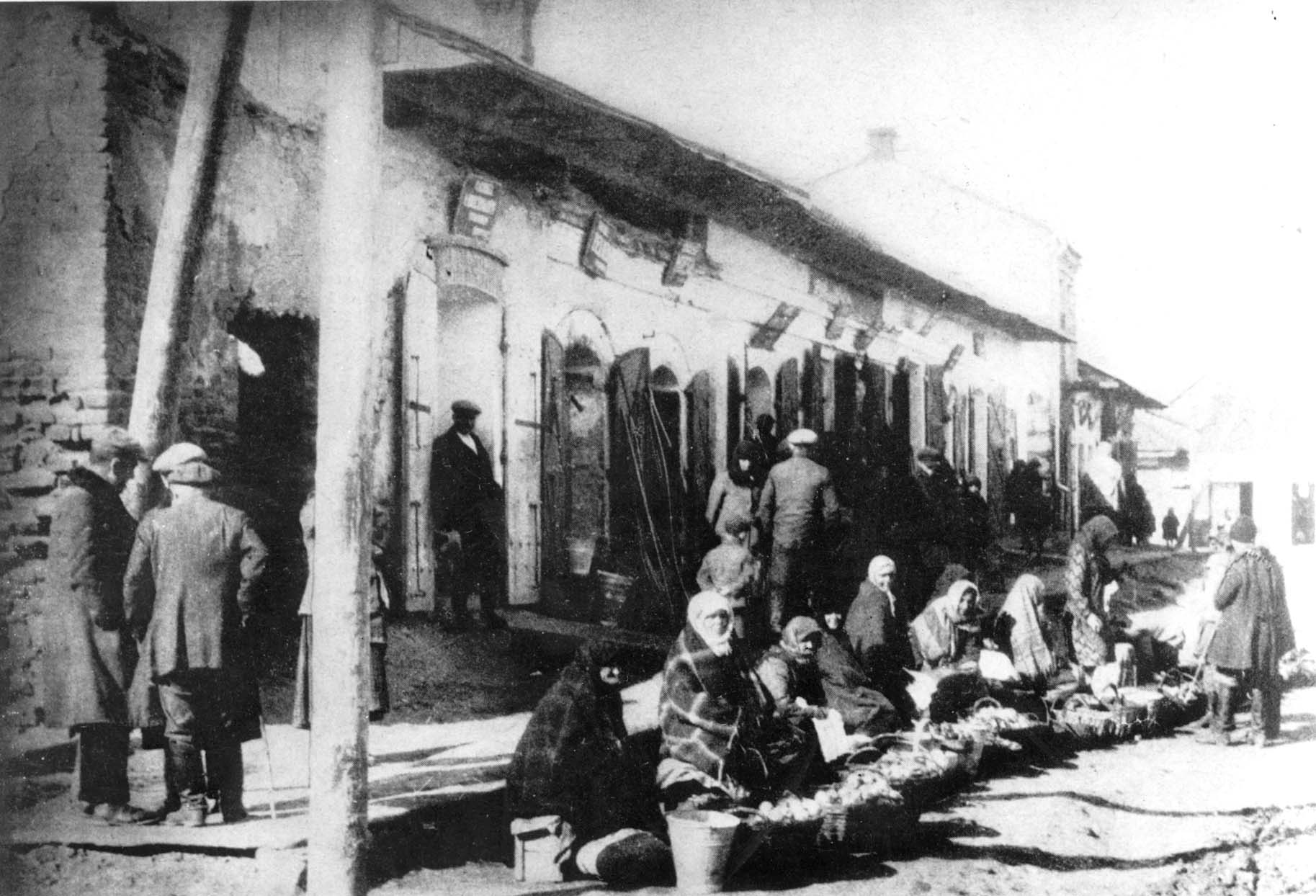

Lokacze
The Germans occupied the town on June 23, 1941. On July 9 the German military authorities appointed a Judenrat (Jewish council), headed by Moshe Pechornik and a man named Shainer. German expropriations, abuse, and killing soon followed. The Jews had to wear a Star of David armband (replaced in late August by a yellow patch). Apparently at the beginning of November 1941, the Jews of Łokacze were forced to move into a ghetto, concentrated around one of the local synagogues. The ghetto initially remained an open one. Jews from other small towns and villages nearby (including Swiniuchy, Kopytów, and Markowicze) were also forced into the ghetto. Due to the terrible overcrowding and the lack of medicine, the death toll from scabies and other diseases in the ghetto began to rise. Shortly after the establishment of the ghetto, about 200 Jewish craftsmen received a special status; a separate area adjoining the ghetto was established for them. All Jews between the ages of 18 and 55 were mobilized for forced labor inside or outside the town. In the winter of 1941-1942 various types of "contributions," including a poll tax, were collected from all the ghetto inmates. By February the ghetto was enclosed by a 2 meter-high barbed wire fence. In April 1942 about 200 Jewish men were sent to the labor camp near the village of Wynice, where they worked under very harsh conditions. In mid-July 1942 additional groups of Jews were taken from the ghetto to work. Most of the remaining craftsmen were transferred from Łokacze to the town of Horochów or to various work sites.
The liquidation of the ghetto took place on September 8 (or 13), 1942, when its inmates were shot to death outside the town by a German unit. Ukrainian auxiliary policemen continued to hunt down those Jews hiding in the ghetto and in the surrounding forests for weeks after the murder operation.
Łokacze was liberated by the Red Army on July 16, 1944.

